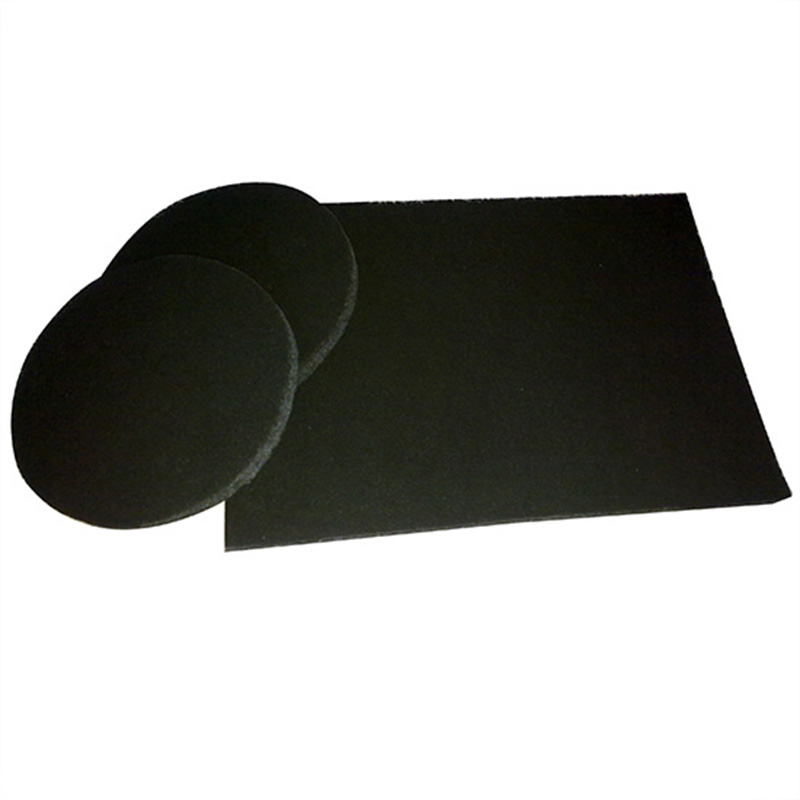Carbon filter material is a highly effective filtration medium that is widely used in both air and water purification systems. Its unique ability to adsorb harmful gases, odors, volatile organic compounds (VOCs), and other pollutants makes it essential in a wide range of industrial, commercial, and residential applications. Typically made from activated carbon—also known as activated charcoal—this material offers powerful chemical adsorption capabilities due to its vast surface area and porous structure.

Understanding Carbon Filter Material
Carbon filter material is derived from carbon-rich organic materials such as coconut shells, coal, wood, or peat. These materials are processed at high temperatures in the absence of oxygen to create a porous form of carbon with a large internal surface area. The process is called "activation," and it increases the carbon’s ability to adsorb contaminants at the molecular level.
The carbon is then formed into various usable products such as carbon filter sheets, granules, foam, pellets, or bonded fabrics. In flat or layered configurations, these are known as charcoal filter sheets or activated charcoal filter sheets, depending on the specific application and type of activation used.
How Does Carbon Filter Material Work?
The primary mechanism by which charcoal filter media functions is through adsorption—not absorption. During adsorption, molecules of contaminants adhere to the surface of the carbon as air or water passes through the filter. Due to its microscopic pores and high surface area (up to 2000 m²/g), activated carbon can trap a wide variety of chemical substances.
In air filtration, carbon filter material is highly effective in removing:
Odors from smoke, pets, cooking, or chemicals
VOCs like formaldehyde, benzene, and toluene
Harmful gases such as ozone and nitrogen dioxide
In water purification, charcoal filter sheets help eliminate:
Chlorine and chloramine
Pesticides and herbicides
Taste and odor impurities
Industrial solvents and chemical byproducts
Because of this versatility, Activated Carbon Filters are often used as a pre-filter or final stage in many filtration systems.
Forms of Carbon Filter Material
Carbon Filter Sheet
A flat layer of bonded activated carbon, often supported by a synthetic or cellulose substrate. Commonly used in HVAC systems, air purifiers, and appliances.Activated Charcoal Filter Sheets
These are sheets infused with high-performance activated carbon, ideal for industrial or medical applications requiring odor and gas control.Charcoal Filter Media
Available in various forms such as granules, loose-fill, or composite materials. Often used in bulk for custom filter housings or equipment integration.Charcoal Filter Sheets
Typically thinner and flexible, these are suitable for use in masks, automotive cabin air filters, and household air cleaners.
Benefits of Using Carbon Filter Material
Effective Gas & Odor Removal: Excellent at eliminating airborne chemicals and unwanted smells.
High Adsorption Capacity: Can trap large quantities of contaminants without releasing them.
Versatility: Used in air filters, face masks, water filters, and industrial exhaust systems.
Cost-Efficiency: Provides excellent performance with relatively low material costs.
Environmentally Friendly: Activated carbon can be made from renewable resources like coconut shells.
Applications of Carbon Filter Material
HVAC Systems: Enhances indoor air quality by removing odors and gases.
Air Purifiers: Often used as the final filtration stage after HEPA to target VOCs and smells.
Face Masks & Respirators: Embedded charcoal filter sheets offer protection from pollutants.
Water Filters: Used in household and commercial filtration systems to improve taste and remove chemicals.
Medical & Laboratory Settings: Maintains clean air environments by removing hazardous vapors.
Maintenance and Lifespan
The effectiveness of a carbon filter sheet or activated charcoal filter sheets diminishes over time as the pores fill up with contaminants. Depending on usage conditions, carbon filters should be replaced every 2 to 6 months for air systems, or as recommended by the water purification system manufacturer. Signs of replacement include noticeable odors, reduced airflow, or poor water taste.
Conclusion
Carbon filter material is an essential component in modern filtration systems, offering efficient and reliable removal of gases, odors, and harmful chemicals. Whether in the form of charcoal filter media, activated charcoal filter sheets, or customized charcoal filter sheets, it plays a crucial role in maintaining healthier air and water environments.
From household air purifiers to industrial ventilation and water purification systems, carbon-based filters provide a simple yet powerful way to improve quality of life. Understanding how this material works and where to apply it can help you make informed decisions for your air and water filtration needs.





